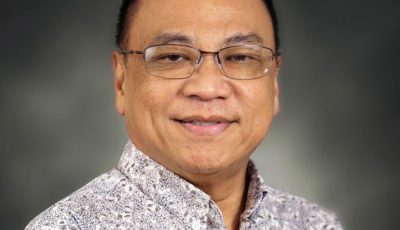First among equals
Our title phrase is one we used to designate functional and assigned role leadership in teams and other corporate bodies we formed among ourselves in the ’60s. It focused on the role and function of a lead, rather than power and status of a position, what one does rather than who folks think they are.
The ethos of power and status is thick even among the basic level of our island’s elementary education. I have commented on how children vie for the position at the head of the line when lining up, to be designated as being in charge when one is evidently in the good graces of a teacher, and to be awarded a certificate of recognition of some sort so that one’s value is affirmed.
That’s how we have affirmed selfhood, and the intent is obviously fair but the method is a competitive drive from Wall Street that allows one to stand on the shoulders of others, and drive down the others if necessary.
Zoroaster of Persia split reality between the spirit of good and evil; god and the demon was born. In the world of spirit are the vying forces of what is right and what is wrong, and we train our young to discern the difference.
The Roman Catholic and Eastern Orthodox churches created an ecclesiastical structure that determined what was good and what was evil. Rites and rituals, symbols and behaviors appropriate for each were developed. Social stability ensued.
In the West, the Roman Church provided the medieval structure of social order until the nationalistic impulse of the local evolved, first, with the English lords that got the sovereign to sign on the Magna Carta, and later, the canton and parishes of inland Europe among the Germans and the Swiss. The question of authority was raised, and the Augustinian monk Martin Luther invoked the authority of Scripture and the congregational structure evolved, so the approach to Scripture, even determining version, became the applied measure.
I am not really against all of the above but they do tend to be distracting over the function of leading, especially when one acts out as a “bully” more than as a “leader”.
We shall not tire of the “winner and free” story, not only because it is true, but it is a way of getting around this penchant to be a leader, to be No. 1 ahead of everyone.
(We rehearse it one more time: everyone born is one of a minimum 200 million sperms and the egg about to be fertilized does not allow the first one that arrives to penetrate. One out of 200 million is an incredible lottery odd, and the egg, whatever norms it follows, chooses which sperm comes in. That is true of everyone; at the moment of conception, one is a winner and free.)
If children are told of this “beginning” of everyone, then they understand each one to be different, and need not get into the Malthusian bias that “there is not enough to go around for everyone,” to compete for the inadequate supply. How long have we operated out of this mindset where Anglican Malthus turned economist guru lead the UN and ADB policies and operations by the nose?
So, “first among equals” is a very radical notion, but also, closer to the truth than the bias of competition thrust upon us by almost everyone because trade and commerce in the West flourished because of competition. Right? Think again.
In the secular arm of the Ecumenical Institute, known in Micronesia as the “blue shirts” of the Institute of Cultural Affairs (ICA), the corporate logo is a circle split into two, the conservatives and the progressives, but the wedge blade cutting across extends outside of the circle, using the metaphor of the “not yet” and the “no longer” appropriate, a trans-establishment stance to recognize the conserving virtue and the liberal tradition, though both positions are never sufficient places to get stuck into as our political divisions tend to go into.
When my family got around to creating our family symbol, we followed the same circle-wedge blade rationale, save the Zoroastrian split turned into the yin-yang with the wedge blade cutting across both but still spilling outside the circle to indicate that the balancing activity on both parts of the circle happens outside of it.
This, of course, does not make sense to anyone who has not struggled through developing their own symbol (too intellectual, is it?), or, articulating what their life story is all about. It is a human thing to do, not only because it takes the notion of selfhood seriously, but more importantly, at how the consciousness of it is formed.
The “first among equals” metaphor defies current definitions of leadership where we polish reputation and status. On pay alone, the CEO of any corporation gets paid, sometimes, 40 times that of the common worker. That does not make sense, nor is the CEO perceived as one among equals.
It is in this status symbol direction that our young are trained to aspire, and one’s position in any corporate structure is determined by the status of one’s role. It is sad but, nonetheless, true. First among equals, I am!



























